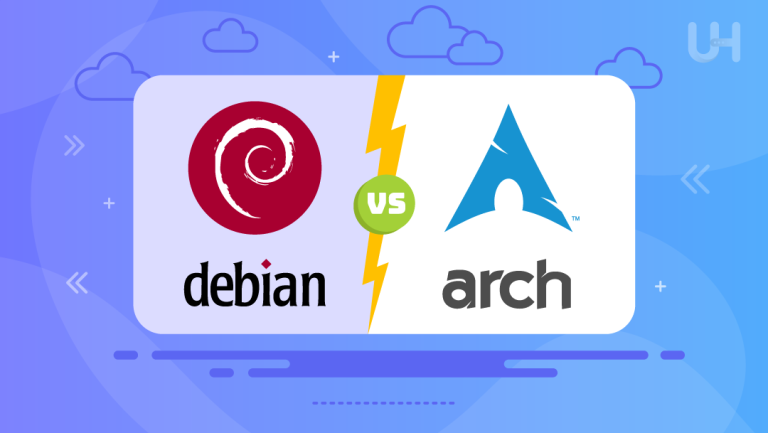Linux distributions, or distros, have grown in popularity due to their flexibility, open-source model, and ability to revive older hardware. Those who need to find a lightweight Linux distro that balances performance, simplicity, and functionality can choose from several options that best suit the diverse needs of different users.
In this article, we will discuss what linux distributions are and why you should opt for the lightweight versions. We will also explore the top 8 lightweight Linux distros to unleash your system to its fullest in 2025.
What are Linux Distros?
Linux distributions are operating systems based on a collection of software based on the Linux kernel and, often, a package management system. They include the Linux kernel, run-time utilities and libraries, and usually large amounts of application software to achieve the distribution’s intended use.
Although all Linux distributions use the same underlying kernel, they can change many things in an operating system to fine-tune and tweak it:
- Variety: The number of Linux distros that cater to various demands of the user. Some are intended for general use, like Debian, Fedora and Ubuntu, and others are targeted at particular applications or users for specific applications, like Kali Linux for security testing and Raspbian to run on the Raspberry Pi.
- Commercial and Community-Oriented Distros: Some distros, like Debian and Fedora, are driven by the community, While others are supported by a commercial source, such as Ubuntu (Canonical Ltd.) and Red Hat Enterprise Linux (Red Hat Inc.).
- Package Management: Every distro has an administration system for packages, including APT for Debian-based distros or YUM for distros based on RPM, which handles updates and software installations.
- Desktop Environments: Distros can include different desktop environments that define the user interface, such as GNOME, KDE, Xfce, and LXDE.
- Modularity: Linux distros are highly adjustable, and the user can decide which distro to install and what configuration to use. Advanced users can make their version of the distro with instruments like Linux From Scratch (LFS).
Why Choose a Lightweight Linux Distro?
The lightweight Linux distros rely on a minimum amount of system resources, thus making them perfect for older computers, low-spec machines, and users who value performance and simplicity. Here are some reasons to go for a lightweight Linux distro for old laptops or so:
- Resource Efficiency: Consumes less RAM, CPU and storage.
- Enhanced Speed: Faster boot and operation times.
- Customizability: Tailor the OS to your needs.
- Extended Hardware Life: Gives older devices a second life.
8 Best Lightweight Linux Distro in 2025

Several lightweight Linux distributions have emerged as some of the best options for users seeking efficiency and speed in 2025. Here is a list of the top 8 lightweight Linux distros that cater to various needs and preferences.
Lubuntu
Lubuntu is an excellent choice for beginners and users with older laptops. It is built on the Ubuntu foundation and utilizes the LXQt desktop environment, known for its lightweight design. Its minimal resource requirements make Lubuntu an ideal option for revitalizing outdated hardware and providing a smooth computing experience. Those who need fast and efficient VPS hosting should pair Lubuntu with quick VPS hosting for remote tasks.
Key Features
- Lightweight yet powerful.
- Extensive software repository via Ubuntu.
- Minimalistic desktop experience.
Puppy Linux
Puppy Linux is ideal for revitalizing older PCs due to its extremely lightweight design. With an ISO size of only a few hundred megabytes, it is easy to download and install. Puppy Linux operates entirely from RAM, contributing to its impressive speed and responsiveness. This makes it a great option for users looking to breathe new life into their aging hardware. Puppy Linux can be the perfect minimalistic OS if you’re running an affordable dedicated server.
Key Features
- Extremely small and portable.
- Boots from USB or CD.
- Customizable package selection.
Get Ultimate High-Performance Hosting For Linux!
UltaHost’s Linux VPS solution is an excellent choice for hosting your website. It offers the highest level of control and customization, ensuring your servers run quickly, steadily, and with guaranteed uptime!
Tiny Core Linux
Due to its size of just 16 MB, Tiny Core Linux is an ideal operating system for highly low-spec machines. True to its name, it offers a minimal footprint while delivering high functionality and customization. This makes it a practical choice for users seeking an efficient and lightweight Linux environment. Use Tiny Core Linux with Cloudflare VPS Server for secure and fast connections.
Key Features
- Lightning-fast boot and operation.
- Modular design for adding what you need.
- Ideal for experienced users.
ArchLabs
ArchLabs is a lightweight Linux distribution ideal for customization enthusiasts. It draws inspiration from Arch Linux but comes preconfigured with the Openbox window manager, offering users a streamlined experience. ArchLabs strikes a careful balance between performance, minimalism, and the ability to customize the desktop environment according to individual preferences.
Key Features
- Pre-configured Openbox for simplicity.
- Fast installation and setup.
- Lightweight while retaining Arch Linux’s flexibility.
AntiX
AntiX is the most lightweight Linux distro based on Debian that distinguishes itself by not using a system. It assures secure communication between your server and users. This design choice contributes to quicker boot times and reduced resource consumption, making it an excellent option for users looking for a more efficient operating system. Pairing AntiX with storage VPS hosting is highly recommended to manage files efficiently across systems.
Key Features
- Available in four sizes: Full, Base, Core, and Net.
- Easy to use yet feature-rich.
- Excellent for live boot.
Linux Lite
Linux Lite is an ideal choice for Windows users who are transitioning to Linux. This user-friendly distribution is designed for newcomers, featuring a familiar interface resembling Windows. It aims to provide an accessible entry point for those looking to explore the Linux environment while maintaining a sense of familiarity.
Key Features
- Beginner-friendly and intuitive.
- Low resource consumption.
- Built-in tools like Lite Tweaks for maintenance.
MX Linux (Fluxbox Edition)
MX Linux Fluxbox Edition is a distribution that merges the robust stability offered by Debian with the lightweight and efficient Fluxbox window manager. This combination provides users a responsive and user-friendly environment, ideal for those seeking performance without sacrificing reliability.
Key Features
- Blazing-fast desktop environment.
- Rich community support.
- Easy to configure and customize.
Peppermint OS
Peppermint OS is an excellent choice for users prioritizing cloud computing in a lightweight Linux distribution. Built on Ubuntu, this distro is designed for speed and simplicity, allowing a seamless experience with cloud-based applications and services. Its lightweight nature makes it ideal for those who want efficient performance without compromising functionality.
Key Features
- Hybrid desktop and cloud approach.
- Ice application for web apps.
- Attractive and modern UI.
Finding the Perfect Environment for Your Server
When considering the deployment of your server, it’s essential to consider the environment in which it will operate. Understanding the pros and cons of VPS hosting can guide your decision. If you opt for VPS hosting, consider factors such as ease of use and rapid provisioning, which are often well-supported by various Linux distributions.
Additionally, one of the significant benefits of using Windows VPS and Linux VPS is the vast amount of documentation and community support available. This extensive resource network allows users, especially those new to VPS environments, to quickly find answers to their questions, ultimately saving both time and effort.
Conclusion
Lightweight Linux distributions are a fantastic solution for reviving older hardware or optimizing performance on low-resource machines. The options discussed, ranging from Lubuntu to Peppermint OS, cater to diverse user needs, whether you prioritize simplicity, customization, or cloud integration. Choosing the right lightweight Linux distro allows you to enjoy a responsive, efficient computing experience tailored to your requirements.
When paired with a CloudLinux VPS from UltaHost, these lightweight Linux distros can unlock exceptional performance and resource efficiency for your hosting needs. Take your VPS experience to the next level with stability, security, and scalability.
FAQ
What is a lightweight Linux distro?
A lightweight Linux distro is designed to use minimal system resources, ideal for older or low-spec hardware.
Which is the best lightweight Linux distro for beginners?
Linux Lite and Lubuntu are excellent choices for beginners due to their user-friendly interfaces and low resource requirements.
Can lightweight Linux distros run on very old computers?
Yes, distros like Puppy Linux and Tiny Core Linux are specifically designed to run efficiently on older hardware.
Are lightweight Linux distros customizable?
Absolutely. Distros like ArchLabs and Tiny Core Linux allow significant customization, giving users control over their setup.
What desktop environments are commonly used in lightweight distros?
Lightweight desktop environments include LXQt (used in Lubuntu), Fluxbox (MX Linux Fluxbox Edition), and Openbox (ArchLabs).
Can lightweight Linux distros be used for cloud computing?
Yes, Peppermint OS is a great example of a lightweight Linux distro optimized for cloud-based applications.
Do lightweight Linux distros support modern software?
While lightweight Linux distros prioritize efficiency, many, such as Lubuntu and Linux Lite, provide access to extensive software repositories, ensuring compatibility with modern applications.










